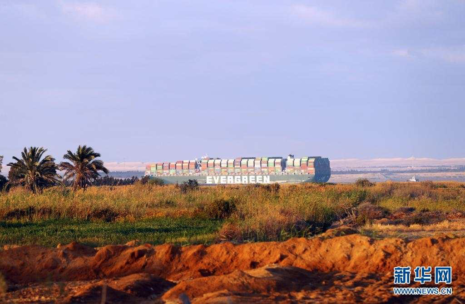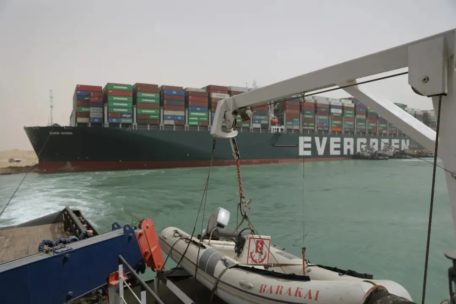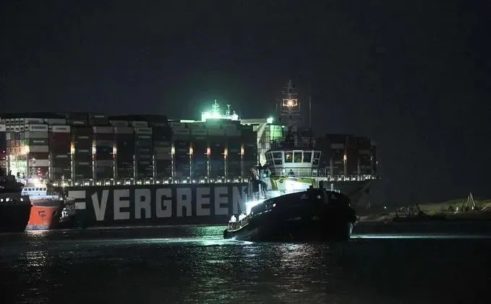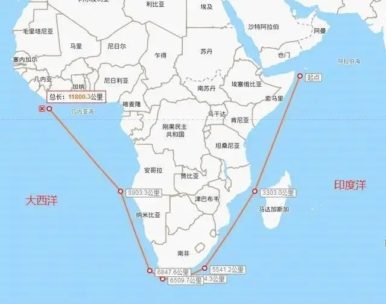According to a CCTV report, on the 29th local time, maritime service provider Inchcape announced on social media that one of the biggest freighters “Ever Given”, which had been stranded on the Suez Canal, successfully refloated at 4:30 am local time. It is reported that the rescue team has successfully rescued the “Ever Given” in the Suez Canal.
At 2 o’clock on March 30th, Beijing time (20 o’clock on the 29th, Cairo time), the Taiwan cargo ship “YM WISH”, which was stranded in the Suez Canal for 7 days, sailed for the southern part of the Suez Canal and passed through the Suez Canal safely at 4 o’clock in the morning. Enter the Red Sea. This is the first cargo ship to pass through the Suez Canal after the ship jam crisis, marking that the Suez Canal has resumed navigation.

At the same time, waiting ships stranded in the Mediterranean waters north of the Suez Canal have also filed into the northern part of the canal. As of 5 o’clock on the 30th, nearly 40 ships have passed or are passing through the Suez Canal.
However, it is still too early to completely clear the stranded ships in the Suez Canal. As of the resumption of navigation, the number of ships waiting to pass at both ends of the Suez Canal has reached more than 400. The Suez Canal Authority estimates that it may take 3 to 4 days to completely relieve all stranded ships.

The Suez Canal connects the Mediterranean Sea and the Red Sea. It is located at the key point of the intercontinental zone of Europe, Asia and Africa. The income from the canal is also one of the main sources of Egyptian national fiscal revenue and foreign exchange reserves. Data show that in global maritime logistics, about 15% of cargo ships pass through the Suez Canal. Lars Jensen, CEO of the Danish “Maritime Intelligence” consulting company, said that about 30 heavy cargo ships pass through the Suez Canal every day, and one day of blockage means that 55,000 containers are delayed in delivery. The German insurance giant Allianz Group estimates that the blockage of the Suez Canal may cause a weekly loss of US$6 billion (about 39 billion yuan) to US$10 billion (about 65 billion yuan) in global trade.
However, this strong wind blew a cargo ship sideways and jammed a waterway, but it affected the global transportation, trade and other industries.
Every day, nearly tens of billions of dollars in cargo transportation is blocked,
It may be toilet paper from European supermarkets,
It may also be your courier from overseas.
According to our estimation, the congestion incident will eventually affect
Approximately 19.6 million tons of cargo caused an average delay of 8.9 days.
This incident also gave global trade a “reminder”: Don’t rely too much on shipping, don’t “put your eggs in the same basket”, and promote the construction of land logistics systems like China-Europe Express. In addition, the blockage of the canal caused a lack of logistics, which may cause the manufacturing industry to change the current raw material inventory system and increase “inventory” to avoid similar situations from happening again.

What will be affected by the this issue:
-The global supply chain is hit again
During the COVID-19 pandemic, the global supply chain was already affected. There was a backlog of goods in European and American ports and a shortage of empty containers in Asian factories. The congestion of the Suez Canal was undoubtedly worse. “Daily Mail” warned that global consumers will be affected, especially overseas online shopping, they may have to wait longer and pay more for shipping.
The international rating agency Moody’s analyzed that because the European manufacturing industry, especially auto parts suppliers, has been pursuing “just-in-time inventory management” to maximize capital efficiency and will not stock up large amounts of raw materials. In this case, once logistics is blocked, production may be interrupted.
“Lloyd Ship Daily” estimates that container cargo worth 9.6 billion US dollars passes through the canal every day, including a large number of sports equipment, clothing, household appliances, electronic products, etc. shipped to Europe; at the same time, thousands of empty containers Need to go through this to return to the Asian factory. Now these transportation work has been forced to stagnate.
IKEA, the world’s largest home furnishing retailer, confirmed that more than 100 containers belonging to the company were carried on the “Changci”. IKEA is investigating the situation of other blocked cargo ships and has issued a warning that the congestion incident has adversely affected the company’s supply chain. The British Dicksons Mobile Phone Company and the Dutch home furnishing retailer Brocker Company also confirmed that the goods were blocked on the river. The automobile manufacturing industry has also been severely affected. Audi said that vehicle delivery and material supply may be blocked. Parts supplier BASF said that the shipment of batteries and plastic parts in Europe and the Asia-Pacific region will be delayed.
In addition, some market participants worry that the prices of international crude oil and other commodities will skyrocket due to the blockage of the Suez Canal. In recent days, international oil prices have risen significantly. The prices of light crude oil futures delivered in May on the New York Mercantile Exchange and London Brent crude oil futures delivered in May have both exceeded $60 per barrel.
In addition, at least 20 ships carrying live animals are currently blocked on the canal. If the congestion lasts for too long, there will be shortages of feed, drinking water, etc., and it will be difficult to shore up to replenish. Animal protection agencies expressed concern about this. According to reports, thousands of cattle have been culled due to shipping delays this year.
-Stress response has been highlighted
Financial experts analyzed that compared with the “weak and helpless” construction machinery on the shore, the global supply chain is more fragile. The blockage of the golden waterway has highlighted the supply problem, and behind it is a “storm” of superimposed problems. .
As the most convenient waterway between Asia and Europe, the long queue of ships on the Suez Canal will inevitably lead to delays in delivery of goods and rising costs, especially European consumers will face a certain degree of shortage of goods and price increases.
At present, crude oil prices, as a leading indicator of bulk commodities, are already fluctuating, and the expected prices of machinery, electronic products and clothing are also rising. This is a stress response to the temporary “shutdown” of busy maritime trade lines.

-The freight rates of the European and Western routes will soar again
Due to the blockage of the Suez Canal, the carrier had to suspend operations. As a result, the spot freight rate of containers from Asia to Europe will soar again. Some shipowners said that if the rescue work lasts for a long time, it may affect the freight rate of all segments.
According to the Russian Satellite News Agency recently quoted Bloomberg’s report, a container ship stranded on the Suez Canal blocked the passage of goods, which caused the price of sea freight to soar. According to the report, the price of a 40-foot container from China to Europe has risen due to the ship stranding incident. To nearly 8,000 US dollars (approximately RMB 52,328), an increase of nearly three times from a year ago.
The cargo ships of many shipping giants have begun to turn around and turn around the Cape of Good Hope in Africa. A detour around the Cape of Good Hope will increase the voyage between Asia and Europe by nearly 8,000 kilometers and take 9-14 days longer (the cost increases by an average of US$470,000, or about 307 Ten thousand yuan). Shipping companies are considering levying surcharges on ships diverted across Africa to make up for the additional cost of bunker fuel consumed during the additional 7 to 10 days of transportation.

This week is likely to increase the rate, once the congestion is over, because many ships will arrive at the port at the same time, congestion will be inevitable. IHS Markit “Business Daily” also stated that according to the planned timetable, within 7 days after the “Ever Given” was stranded on the 23rd, 49 container ships carrying 407,500 TEU will pass through the Suez Canal in both directions. After the huge ship is rescued and released, a large number of container ships will intensively arrive at major hub ports in Europe, which will put pressure on port facilities and inland basic transportation.
The ports of Rotterdam and Antwerp expect that the waiting time for ships to enter the port will be extended, and it will take longer to dispatch ships and clear containers from the yard, and companies will have to wait longer to pick up the goods. This will cause the carrier’s on-time rate to deteriorate further. ”
The Ningbo Container Freight Index (NCFI) commented and reported that transportation demand on European-to-land routes is on the rise, and the delays of multiple voyages have reduced the actual capacity of European-to-land routes. The overall space is very tight and the market rate is at a high level. Spaces from Asia to Europe are “tightening” again, which shows that regardless of the Suez Canal crisis, freight rates will rise this week.
Last week, the Baltic Weekly Index (FBX) showed that the spot freight rate from Asia to the US West increased by 17% to US$4,909 per 40 feet. However, the freight rate in the East of the US increased slightly to US$5,735 per 40 feet in the previous period.
Now that the freighter has successfully escaped, and the Suez Canal has been reopened, the small excavator that everyone is distressed can finally get off work.